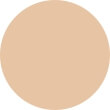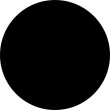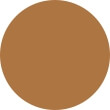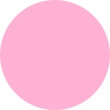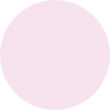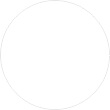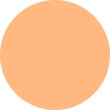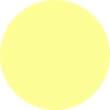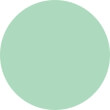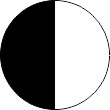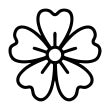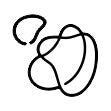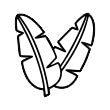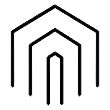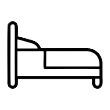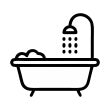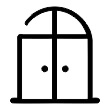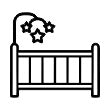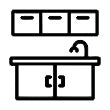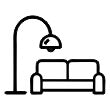How To Install Peel And Stick Wallpaper With WallTrendz Expert Guidance
Peel-and-stick wallpaper has gained popularity as an ideal option for temporary projects or rented spaces that could use a touch of extra charm. Reading and reviewing the following installation instructions attentively is essential to ensure a successful application to your walls.
We highly recommend installing a test swatch on your specific surface before making a larger order, allowing you to assess compatibility and achieve optimal results.
This guide explains how to hang peel-and-stick wallpaper and the necessary preparation. To achieve a professional-looking finish, follow our how-to instructions.
Why Is Peel And Stick Best For DIY Projects?
Peel and stick wallpapers are excellent choices for DIY projects for several reasons:
- Easy Installation: Peel-and-stick wallpaper comes with adhesive packaging, making it incredibly simple to install. Just peel off the backing paper and stick it to the desired surface.
- Rental-Friendly Customization: If you're a renter, peel-and-stick products offer a fantastic way to customize your living space without violating lease agreements. With peel-and-stick wallpaper or other products, you can add your personal touch to walls, cabinets, or furniture, knowing you can easily remove them when it's time to move out.
- No Mess Or Additional Tools Required: Peel and stick products eliminate the need for messy adhesives or specialized tools. Since the adhesive is already applied to the product, you don't have to deal with glue, paste, or other messy substances.
- Cost-Effective: DIY projects often aim to save money, and peel-and-stick products offer a budget-friendly option. They eliminate the need for professional installation, making them an affordable choice.
- Quick Updates: Whether you want to refresh a room or add a pop of colour, peel-and-stick wallpaper lets you quickly update without the hassle of traditional wallpaper installation.
- Damage-Free Removal: One of the most significant advantages of peel-and-stick wallpaper is that it can be removed without leaving any residue or damaging the underlying surface.
GOT TEXTURED WALLS?
Avoid using Peel and Stick wallpapers on textured or damaged walls. Textured walls have irregularities on the surface, making them unsuitable for application. Ensure a smooth and flawless surface for best results.

Before Beginning
- Upon receiving your order, carefully unpack and inspect its contents, even if you do not plan to install it immediately.
- Before installation, thoroughly examine the color consistency, panel match, or pattern repeat across your entire order.
- If you notice any defects or flaws in the wallpaper, refrain from installing it. Contact us first for further assistance.
- Whenever possible, commence the installation process from the left side and proceed towards the right.
- Installing murals in sequential order is recommended, starting with the lowest number (1) and following a left-to-right orientation.
Getting A Head Start
Preparation Of Your Walls For Peel And Stick Wallpaper
Surface Preparation:
- Ensure your wall is smooth, clean, and free from dust.
- Patch any damaged areas to avoid tearing the wallpaper.
- Walls with texture or painted with scrubbable or No-VOC paints are not recommended for peel and stick wallpaper.
Surface Color And Finish:
- The surface should have a light, solid color.
- For optimal results, ensure the surface has a light, solid color. Preferred primer and paint finishes include Eggshell, Satin, and Semigloss, while Gloss and Matte options are also acceptable. (Note: Matte may cause paint damage during removal).
- Recently primed or painted walls should dry for at least 30 days before installation.
Installation Recommendations:
- Avoid installing on textured walls.
- Do not apply over "scrubbable" paints.
Improving Painted Wall Surface:
- Create a solution of 30% isopropyl alcohol and 70% water.
- Wipe the solution over the entire wall using a clean, lint-free rag.
- Allow the wall to dry completely.
- Install a test swatch to ensure proper adhesion before proceeding with a larger wallpaper order.
Electrical Precautions:
- Safely remove any outlet covers and light switch plates in areas where the wallpaper panels will be installed.
- Turn off the power before working on these areas.
Cleaning The Wall:
- Clean the wall's surface using a mild cleaner and damp cloth.
- The surface should dry completely for at least 24 hours.
Learn More On Cleaning The Wall - HERE
Collect Your Necessary Tools
 Sponge
Sponge - Squeegee
- Level
- Steel Ruler
- X-Acto Knife
- Pencil
- Extra blades
Find A Friend And Plan Your Schedule
Find a caring friend to assist you with hanging wallpaper, as it requires two people. Make sure to set aside a full day for the task, as this will help maintain a steady and precise hand throughout the installation process.
Prepare For Installation:
Remove switch and socket covers, as well as window treatment hardware.
Lay Out Your Wallpaper:
- Unroll each roll in the same direction.
- Each roll will have the panel number at the top left. It is mandatory to install each panel according to this number.
Choose Where To Start Hanging:
- If installing across one, two, or three walls, begin hanging at the farthest left or right corner and continue in one direction until you finish.
- The final panel may not align seamlessly with the first panel when installing on all four walls. To minimize visual disconnect, start hanging the first panel at an inconspicuous point in the room, such as behind an open door or a taller piece of furniture.
Important Note For Installations With Different Wall Heights:
- It is recommended to order all rolls at the longest wall height.
- Using rolls of different lengths can make it challenging to align the patterns due to the vertical design repeat.
Before starting the installation process, make sure to follow these steps to properly lay out your wallpaper.
Hanging The First Roll
Creating A Guide For Your First Panel:
- Measure the width of your peel-and-stick wallpaper panel.
- Mark the width of the wallpaper panel.
- Begin by marking a vertical line from the ceiling to the floor at the designated spot. This line will serve as the guide for your first wallpaper panel.
- Avoid aligning the wallpaper directly to a corner or the ceiling, as this may result in an uneven appearance.
Starting To Hang The First Panel:
- Ensure the wallpaper pattern is facing the correct direction.
- Peel and fold back 6 inches of the backing paper on the first panel to expose the adhesive.
- Apply the wallpaper panel to the top of the wall, overlapping the ceiling slightly.
- Verify if the wallpaper is straight by aligning the right side with the Guide Line established earlier.
- If the wallpaper appears uneven or misaligned, gently lift it and repeat this step until it is straight.
- Begin peeling the backing paper gradually, exposing no more than 10 inches of adhesive surface at a time. Continuously verify that the right side of the wallpaper aligns with the Guide Line.
- When peeling the backing paper, always pull it down in a straight direction. Avoid pulling the wallpaper at an angle, as this may cause the material to stretch.
- After peeling off a small portion of the backing paper, employ the squeegee tool to firmly press the wallpaper onto the wall. Start from the center and gradually work your way outwards, smoothing out any bubbles along the way.
- Utilizing the squeegee tool during this process is essential as it ensures proper adhesion of the wallpaper to the wall. Skipping this step may result in the wallpaper detaching shortly after installation.
Overlapping Each Following Panel

- Take the second panel.
- Determine the appropriate overlap, around 0.5" (1-2 cm), to smoothly install it along the edge of the first panel.
- Start at the top and properly align the paper along the top edge of the wall.
- Repeat the steps from the first panel, working down the wall in 4-6" segments, continuously checking the pattern alignment before using the squeegee.
- To adjust the position, gently remove the paper parallel to the wall with even pressure to avoid stretching.
- Finish the entire installation by placing the remaining panels.
Installing Near Windows And Doors, Corners, Plugs, And Panels:
Around Windows Or Doors:
- Determine how much paper you need to install around the molding edges of windows or doors.
- Trim away the bulk of the paper to help ease the adhesion, but wait until all wallpaper panels are installed before trimming the final excess to the edges.
Around Corners:
- Installing around corners, both inside and outside, can be tricky. It is simpler to manage the installation by ensuring that a few inches of paper are wrapped around the edges instead of cutting the wallpaper straight into the corner. This gives you more control and a cleaner finish.
Outlets And Wall Panels:
- Install the wallpaper over outlets and wall panels.
- Trim the excess appropriately after completing the installation.
- Be cautious when working around live electrical outlets.
Final Steps
- Trim the edges of the wallpaper panels using a sharp, fresh blade for a clean finish.
- Consider using a stable snap-off knife like the Olfa SAC-1 Graphic Cutter for better control during trimming.
- Ensure straight cuts by using a straight edge along the ceiling, baseboards, and vertical corners.
- Using a straight edge prevents any uneven edges and ensures a professional-looking installation.
Product Cleaning Tips
- Use a damp microfiber cloth and mild detergent dish soap to clean.
- Avoid aggressive rubbing while cleaning.
Removing Wallpaper
- The longevity of wallpaper, and its ease of removal, depends on temperature, humidity, and wall preparation.
- Typically, wallpaper can remain in place and be easily removed for around one to two years.
- After removal, if the adhesive has hardened or the paper was installed in dry conditions, some touch-up may be required on the surface.
To Remove The Wallpaper:
- Start at the top of the last installed panel and work your way backwards.
- Use a knife to lift a corner of the wallpaper.
- Gently pull the paper downward at a 180-degree angle, parallel to the wall surface.
- Keep applying slow and steady force until you reach the bottom of the wall.
- Repeat this process for the remaining panels.
- Dispose of the paper properly, as it cannot be recycled.
- Pulling the paper down instead of away from the wall will minimize any unintended removal of paint or primer.
A Word From WallTrendz
To ensure a successful peel and stick wallpaper installation, it is essential to have a clean, dry, and smooth wall surface. This means that the wall must be free of any cracking paint, mold, grease, or stains that can affect the adhesion of the wallpaper.
- Repair any wall holes with sharp edges that could rip or pierce the wallpaper.
- The following paint and primer finishes are acceptable.
- Eggshell (recommended)
- Satin (recommended)
- Semi-gloss (recommended)
- Shiny Matte (Removal may experience some paint damage)
- To ensure easy removal of wallpaper and better adhesion, it is advisable to use paint finishes such as Sateen or Gloss. Avoid using Matte or Flat finishes, which tend to be rough and can cause paint lifting when removing the wallpaper.
- Walls recently painted or primed should dry for at least 30 days before installation.
- Moreover, wallpaper may not adhere to walls painted with washable, scrubbable, or No-VOC paint.
- To achieve optimal wallpaper installation results, work in pairs, complete the project in one session and allot an hour per panel. A single session will guarantee a smooth fit of your pattern because paper shrinks as it dries. This will ensure a seamless and bonded application.
- We highly recommend installing a test swatch on your unique surface before placing a larger wallpaper order.
- It is important to note that ordering all your wallpaper rolls at the longest wall height is recommended if your installation space contains walls of different heights. Purchasing and installing rolls of different lengths can be difficult, as aligning the patterns may prove challenging due to the vertical design repeat.
-
Check the wallpaper Safety Information Guidelines.
Frequently Asked Questions
Q: Can I Use Peel & Stick Wallpaper On Textured Walls?
Ans: Removable Peel and Stick wallpapers may not adhere properly to textured walls such as Orange Peel, Popcorn, Knockdown, Slap Brush, and Sanded Walls and can fall off shortly after installation, which can be both frustrating and unsafe. If your wall feels uneven to the touch or has bumps and irregularities, it likely has a textured surface.
Q: Does Removing Peel-And-Stick Wallpaper Damage The Walls?
Ans: No! If you decide to remove the peel and stick wallpaper, it will not damage the wall or the paint.
Q: Can Peel And Stick Wallpaper Be Used In The Bathrooms?
Ans: Yes! Peel-and-stick wallpaper is a great choice for moist places like bathrooms.
